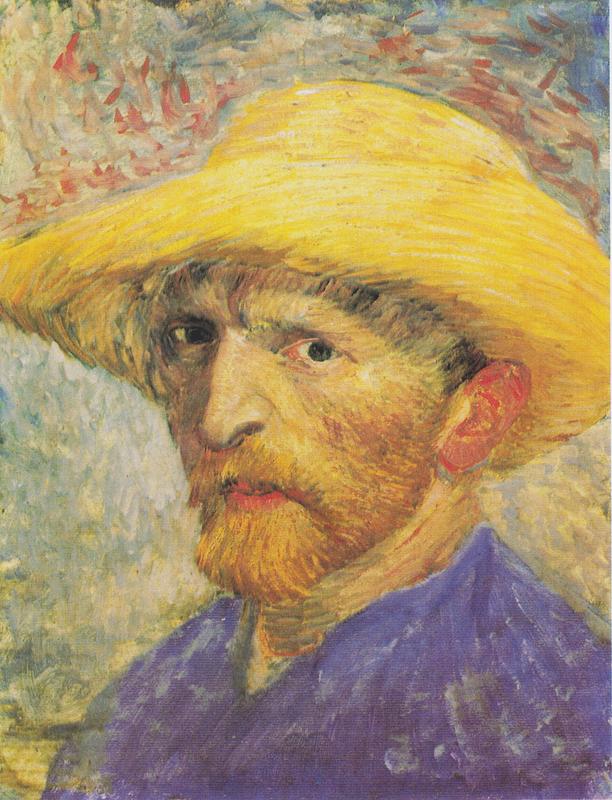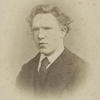More about Self-Portrait

Contributor
The question to ask when you see Self-Portrait with Straw Hat is exactly how many self-portraits did Vincent van Gogh paint?
From 1886-1888, van Gogh visited Paris and hung out with his brother Theo, who ran an art gallery in Montmartre. Before departing for Arles and cutting off his ear in the midst of a mental breakdown, those two years in Paris greatly informed his style of painting. Surrounding yourself with the works of the Impressionists like Claude Monet, Camille Pissarro, and Paul Signac will do that. It was their work that encouraged a weary-eyed Vincent to use more color.
These self-portraits acted as a glimpse into his mental state. Van Gogh was said to have suffered from various psychiatric conditions, and being a heavy drinker certainly didn’t help to soothe his mind. He gave this rendition to fellow painter Emile Bernard, who would end up selling it off in the early 1900s, but van Gogh’s self-portraits were more often than not sent to his little brother Theo. It was Vincent's intention to show Theo just how ‘healthy’ he was and how ‘well’ he was doing by painting self-portraits that were happy-looking and bright. I mean, he wasn’t going to give Self-Portrait with Bandaged Ear to Theo.
It’s not the first time van Gogh has painted this bright yellow straw hat in a self-portrait. While he did paint himself with different headwear, like the felt hat he depicted in Self-Portrait with Dark Felt Hat at the Easel and Self-Portrait with a Grey Felt Hat, his go-to accessory when he painted outside was this straw version.
In 1922, the Detroit Institute of Arts nabbed Self-Portrait for $4,200, a bargain in comparison to what this portrait of sunshine and happiness is worth now – a whopping $150 million. While the museum was the first in America to boast a van Gogh, it also came very close to selling off the prized possession in 2014, when it was on the brink of bankruptcy. There is a happy ending to the story of this painting. The Detroit Institute held on to Self-Portrait (and other prized paintings in their collection) and were financially rescued by the state of Michigan and other donors. A deserved round of applause, I think.
Sources
- Agence France-Presse, “Dutch scientists may have unlocked the mystery of Van Gogh’s ear mutilation,” The Jakarta Post, November 6, 2020. Accessed March 19, 2020. https://www.thejakartapost.com/life/2020/11/06/dutch-scientists-may-hav…
- Agence France-Presse, “Vincent van Gogh: five things to know,” The Jakarta Post, June 19, 2020. Accessed March 19, 2020. https://www.thejakartapost.com/life/2019/06/18/vincent-van-gogh-five-th…
- Bailey, Martin, “A concise guide to Van Gogh’s adult life: how the artist celebrated his birthday over the years,” April 10, 2020. Accessed March 17, 2020. https://www.theartnewspaper.com/blog/how-van-gogh-celebrated-his-birthd…
- Bailey, Martin “Millinery mix up: scholar says Van Gogh Museum has mistaken hatted portraits of Theo and Vincent,” The Art Newspaper, July 3, 2019. Accessed March 18, 2020. https://www.theartnewspaper.com/news/a-pair-of-van-gogh-portraits-is-th…
- Bailey, Martin, “Van Gogh self-portrait – almost sold by cash-strapped Detroit – will be star of major show on the artist and America in 2020,” The Art Newspaper, November 2, 2018. Accessed March 17, 2020. https://www.theartnewspaper.com/news/van-gogh-det
- Kinsella, Eileen, “The Detroit Institute of Arts’ 12 most valuable works,” July 10, 2014. Accessed March 17, 2020. https://news.artnet.com/market/the-detroit-institute-of-arts-12-most-va…
- Henley, Jon, “Vincent van Gogh Paris painting from 1887 to make public debut,” The Guardian, February 25, 2021. Accessed March 17, 2020. https://www.theguardian.com/artanddesign/2021/feb/24/vincent-van-gogh-p…
- Kaylee Randall, “Questionable van Gogh self-portrait is authenticated. It is real?” The Collector, February 11, 2020. Accessed March 17, 2020. https://www.thecollector.com/questionable-van-gogh-self-portrait-is-aut…











